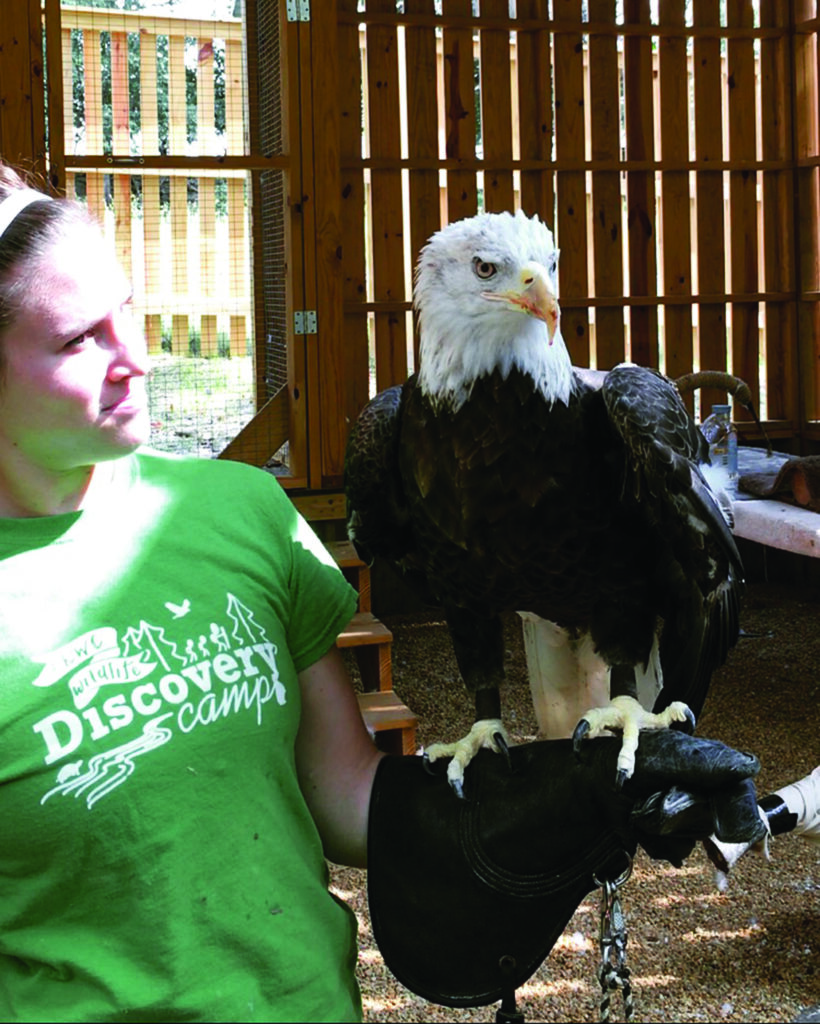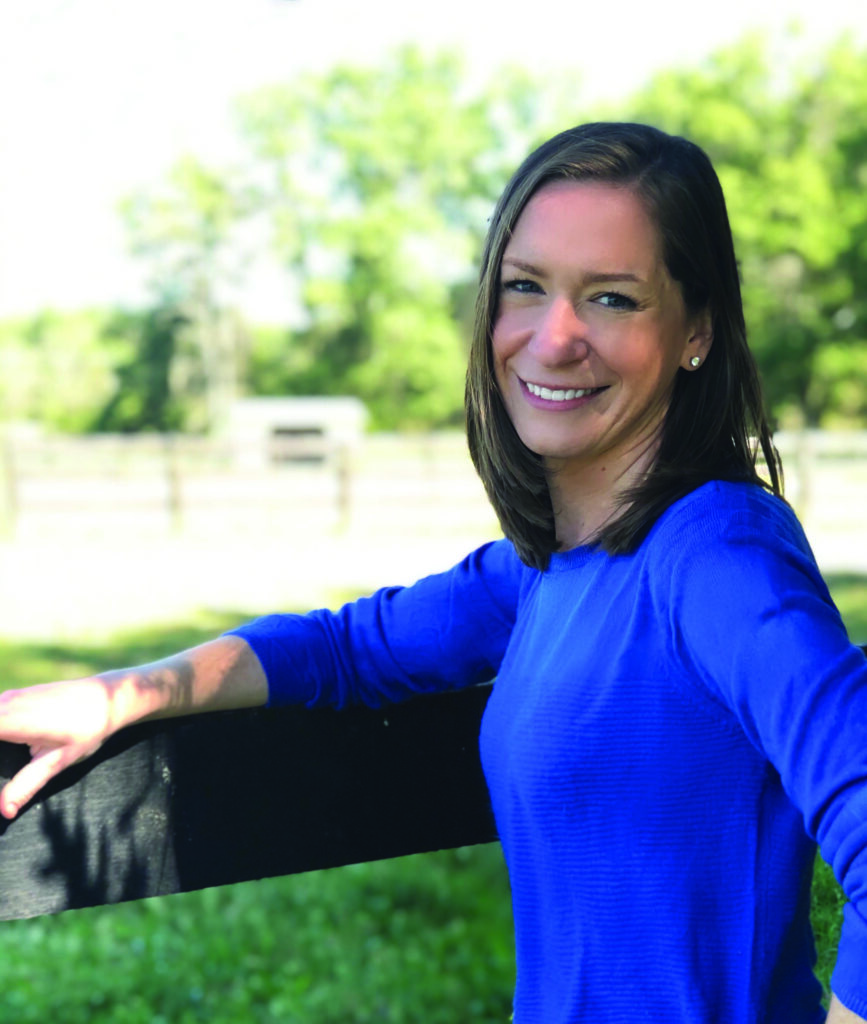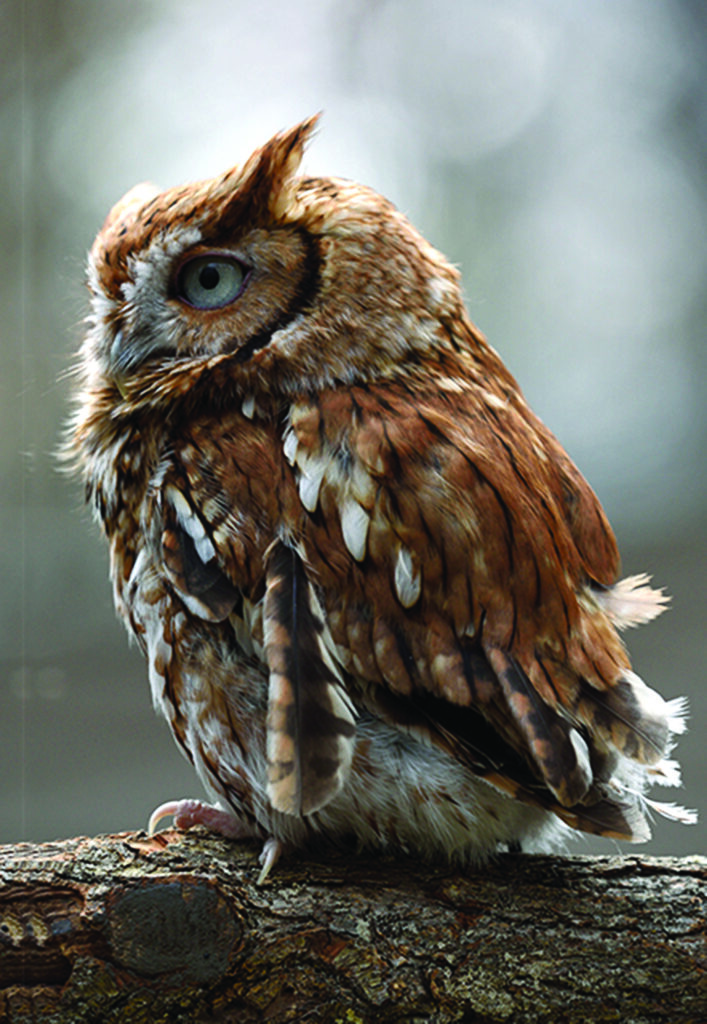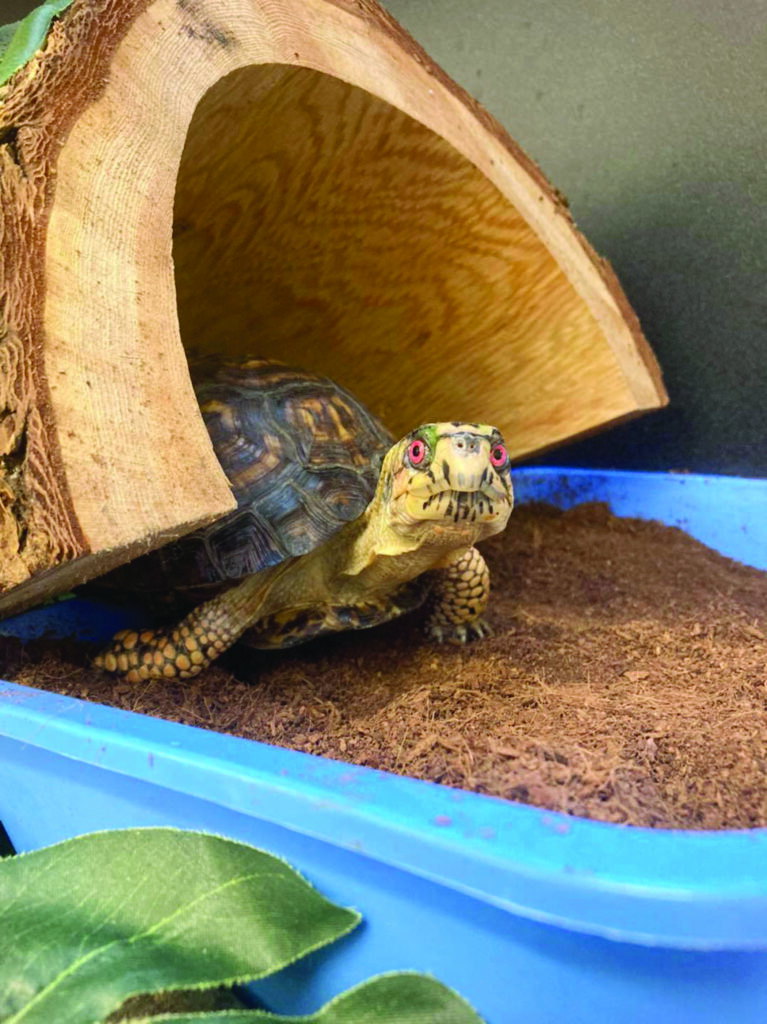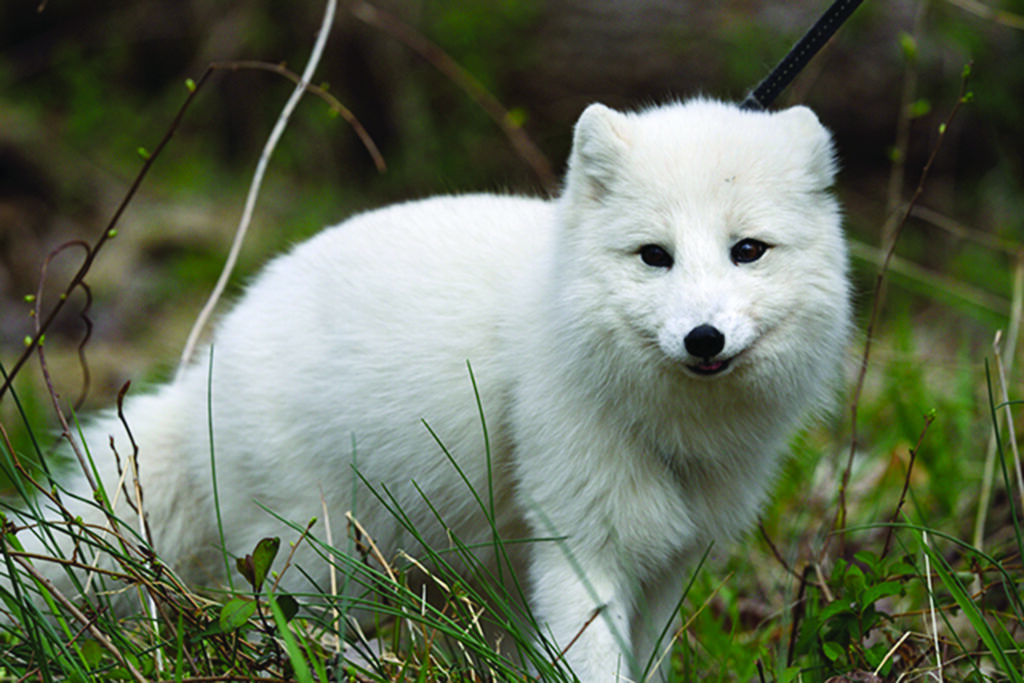Caretakers of the Wild
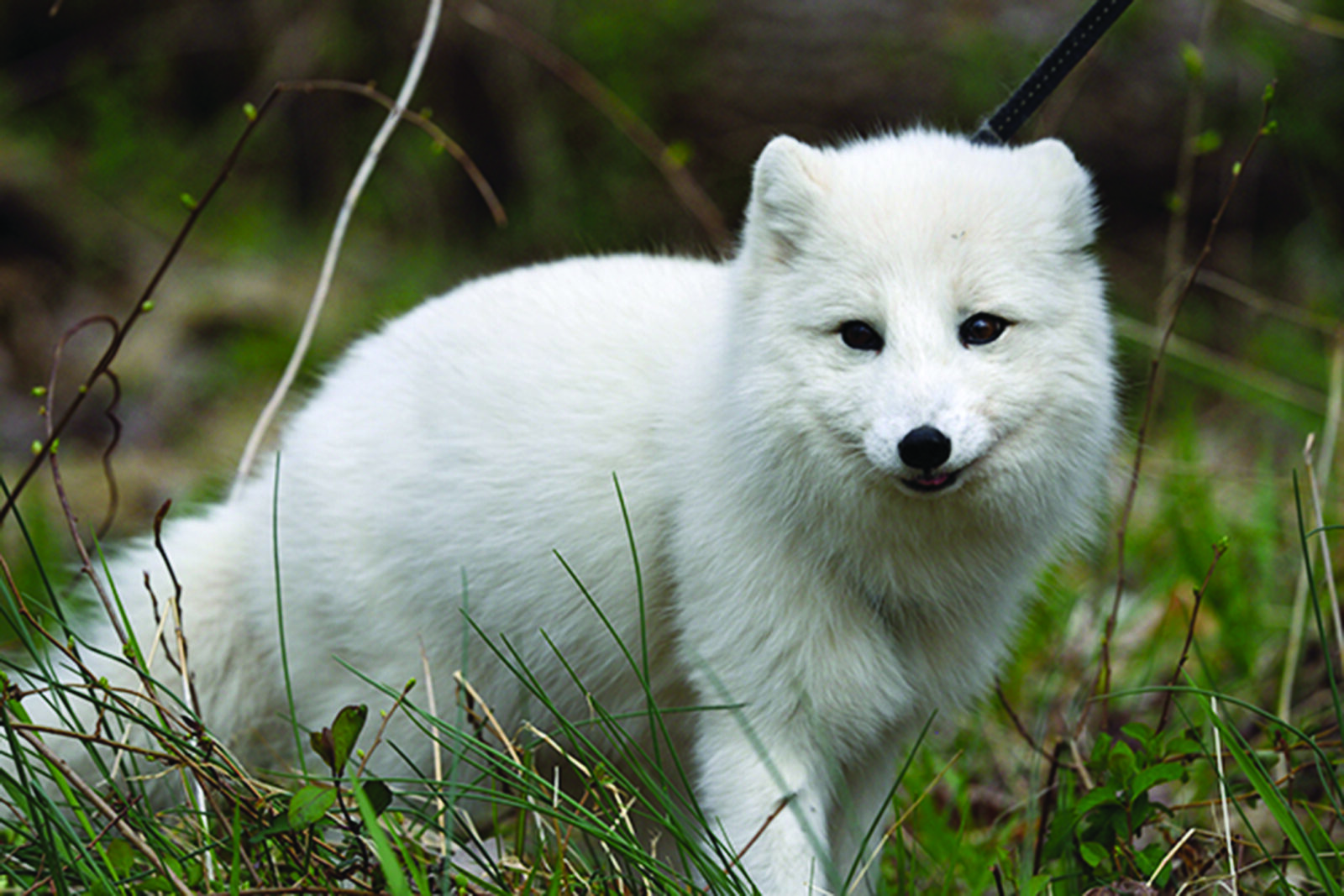
By Patrick Mulrooney
Hidden amongst the high-canopied woodlands of Millwood, VA., there is a wonderland to be found.
Following the signage, guests wind their way along forested pathways up to a dynamic compound that looks part nature center, part hospital and part Jurassic Park. Welcome to the Blue Ridge Wildlife Center. If you’re a finder of an injured animal, a person who is eager to learn about nature, or if you’re a sick native animal in need of care, you have found the right place.
One side of the facility boasts a large wooden compound with tall fences, comprised of enclosures for rehabilitating animals, with a wide wooden trail running along the face of each cage. Native plants have been cultivated throughout and can even be found in the turtle pond, which bustles with aquatic life.
Left: Jess with Jefferson. Right: Nigel. Photos provided by BRWC.
The other side is a full-service wildlife hospital and education center. With administrative offices, a large conference room designed for education programs, and a hospital facility equipped to handle most surgeries, the center employs a regular staff of six. The nonprofit receives no state or federal funds and relies solely on private donations. New executive director Annie Bradfield is familiar with these kinds of challenges, as she has spent her entire career in nonprofit fundraising.
“We are a small shop, and we all wear many hats,” Bradfield says. “That is the nature of a small nonprofit; you work with the resources you have. You get into this line of work because you’re passionate about the mission — and you have to be because it is hard work.”
Left: Annie Bradfield, Blue Ridge Wildlife Center executive director. Right: Dopey. Photo by Katie Hertrich.
At the helm of the hospital side is Dr. Jennifer Riley, or Dr. Jen, the director of veterinary services. With a strong background in wildlife medicine and rehabilitation, she received her bachelor’s degree from Cornell University and her veterinary degree from Tufts University.
While many of the procedures are simple, such as treating animals for mange, a common illness for immuno-compromised animals, others can be quite complex and require a great deal of time and resources.
“[Raptors] break more than one thing in more than one place,” Riley says, referring to the complicated orthopedic surgeries that are often necessary.
Sheldon. Photo provided by BRWC.
When asked about her most challenging operations or rewarding success stories, Riley doesn’t think back too far. “We released four vultures yesterday,” she says. Her focus on the present is an occupational necessity, as the day-to-day operations in the animal hospital can be unpredictable.
“You never know what will come through that door,” Riley says. “This isn’t like a typical veterinary hospital where appointments are scheduled ahead of time. We typically find out a patient is coming in for care when they arrive at our door.”
This year their doorbell has been busier than ever, with over 2,700 patients admitted, an increase of approximately 500 over last year. The rise in admissions may be due to COVID-19 and increased human activity outside, says Bradfield, who also points out that revenue from the education programs has almost completely dried up for the same reason.
The mission of the Blue Ridge Wildlife Center is a multifaceted one that integrates veterinary medicine, physical rehabilitation, education and research — a system described on the website as One Health. The primary goal is to help and heal native animals and get them back into the wild. The second goal is education — The Ronald M. Bradley Learning Center houses some of their more temperature-sensitive wildlife ambassadors, such as southern flying squirrels, turtles, snakes and Bruce, the big brown bat.
Bradfield says the outreach doesn’t end with the education programs. “Every conversation with a caller on the wildlife hotline is an opportunity to educate,” she says.
Snow. Photo by Katie Hertrich.
Additionally, the wildlife center hosts a summertime Wildlife Discovery Camp for ages 6-14 and maintains a “Wildlife Walk,” which will be open to the public spring of 2021, featuring a diverse group of raptors, including a peregrine falcon, a bald eagle, red-tailed hawks and owls.
In between the exhibits, guests pass among dozens of native plant species, such as lobelia, ferns, blueberry and winterberry, complete with plant identifier placards. A high ceiling of native trees hangs overhead. Patches and Dopey, the Eastern screech owls, live here, along with Snow, the arctic fox, their one non-native species, who once belonged to a Winchester drug dealer.
Due to the nature of the work at Blue Ridge Wildlife Center, the staff perform a largely thankless job: Their patients do not send checks, or write Yelp reviews or thank-you cards. They aim to send each patient into the wild again, never to return. However, there are some signs of their work for those who wish to visit the Blue Ridge Wildlife Center. Just take a look at Snow, the Arctic fox. ML
Published in the December 2020 issue of Middleburg Life.


